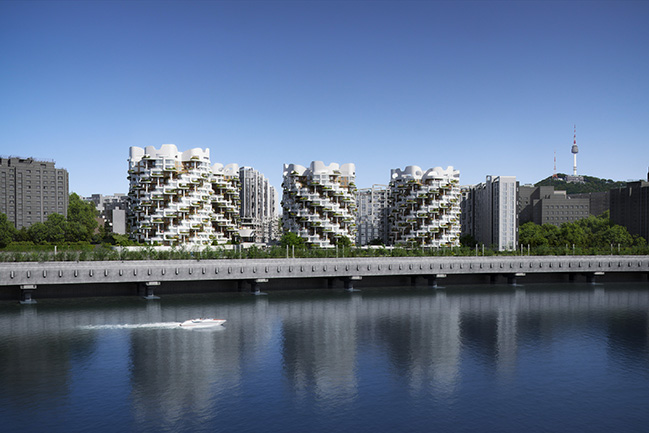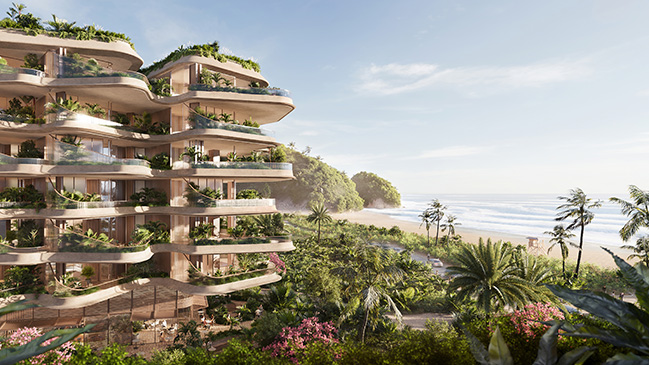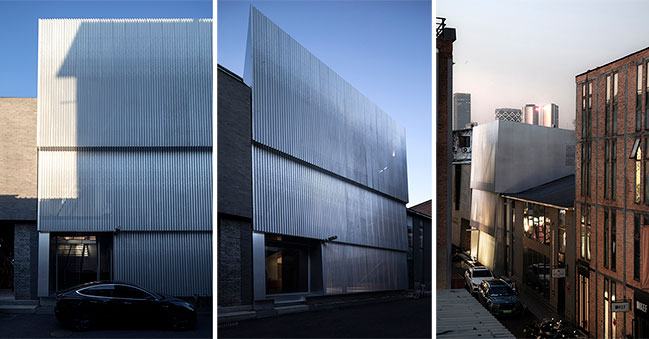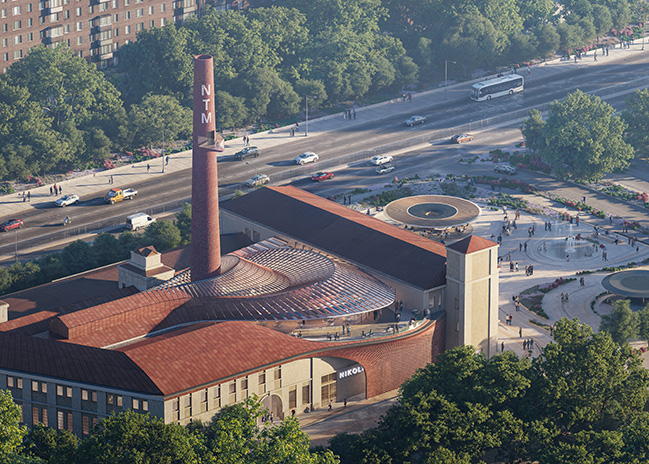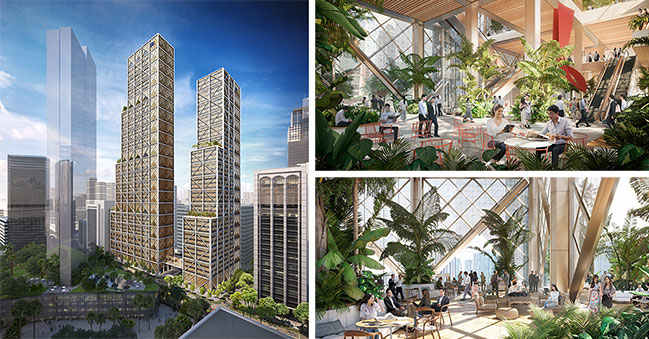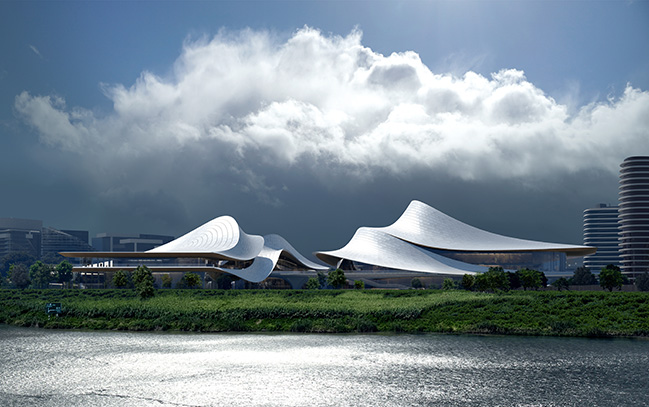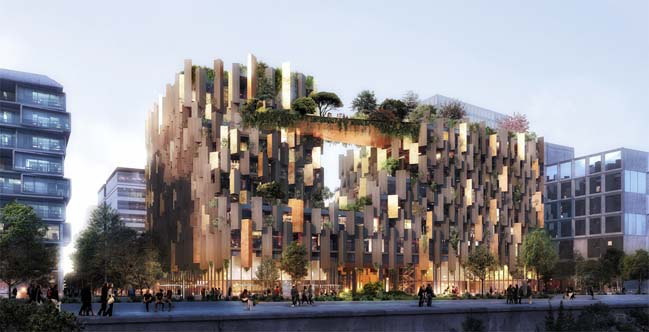02 / 10
2025
The Expo City Dubai masterplan is designed as a blueprint for sustainable urban living and is one of five hubs on the Dubai 2040 Urban Master Plan and its roadmap to achieving net zero by 2050, alongside its broader decarbonisation targets that aim to raise the bar on responsible urban development...
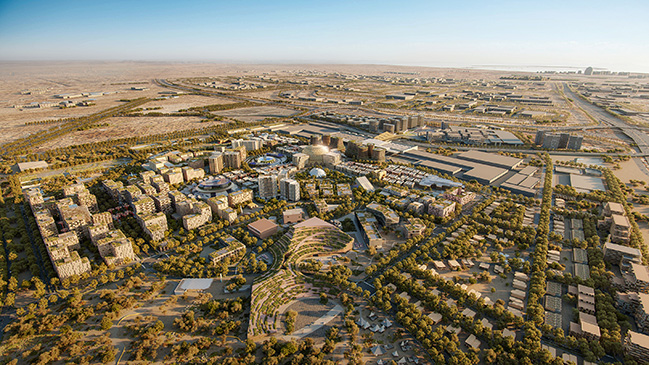
> UNStudio Unveils Biophilic Residential Concept in Seoul for Samsung C&T Corporation
> UNStudio completes the EZ Parque da Cidade in Sao Paulo
From the architect: Expo City Dubai is a mixed-use development that builds on the legacy of Expo 2020 Dubai, the first World Expo to be held in the Middle East, Africa, and South Asia regions. The event attracted over 24 million visitors from 192 nations over its six-month duration. Following the event, the site also hosted Cop 28.
The recently announced Expo City Dubai Masterplan provides an opportunity to introduce a new centre for the future of Dubai. A development that acquired LEED Gold/ Well Community Gold certification and is an innovation-driven, people-centric community, rooted in the belief that collaboration can propel sustainable progress.
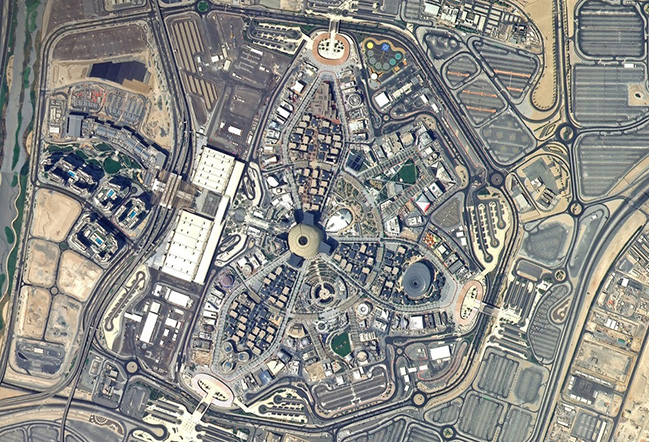
The Expo City Dubai masterplan, developed by UNStudio (Urban design and Architecture) in collaboration with Buro Happold (Engineering/Sustainability), SLA (Landscape and Public Space Design), Endpoint (Wayfinding), Compass (Cost Consultant) and LDC (lighting), EGIS (AoR) and Vedra (Project management support) is designed as a blueprint for sustainable urban living and is one of five hubs on the Dubai 2040 Urban Master Plan and its roadmap to achieving net zero by 2050, alongside its broader decarbonisation targets that aim to raise the bar on responsible urban development.
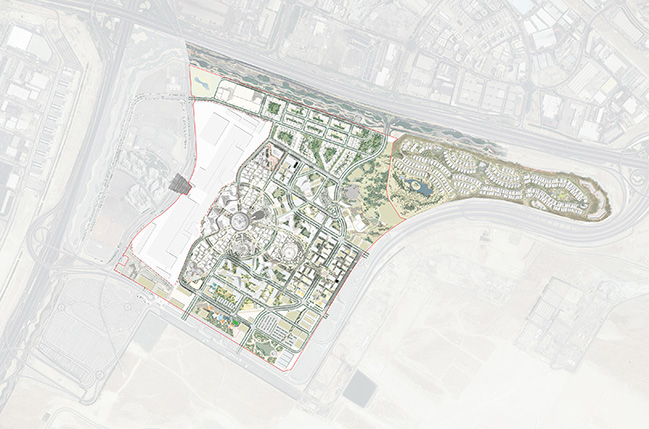
Transformation of the existing plan
UNStudio’s masterplan maintains the fabric and spirit of the existing site across the entire legacy development and retains more than 80% of the infrastructure and buildings developed for Expo 2020. It also ensures that Expo City Dubai continues to be fully cohesive, while benefitting from the value of the built environment developed for hosting Expo 2020 Dubai.
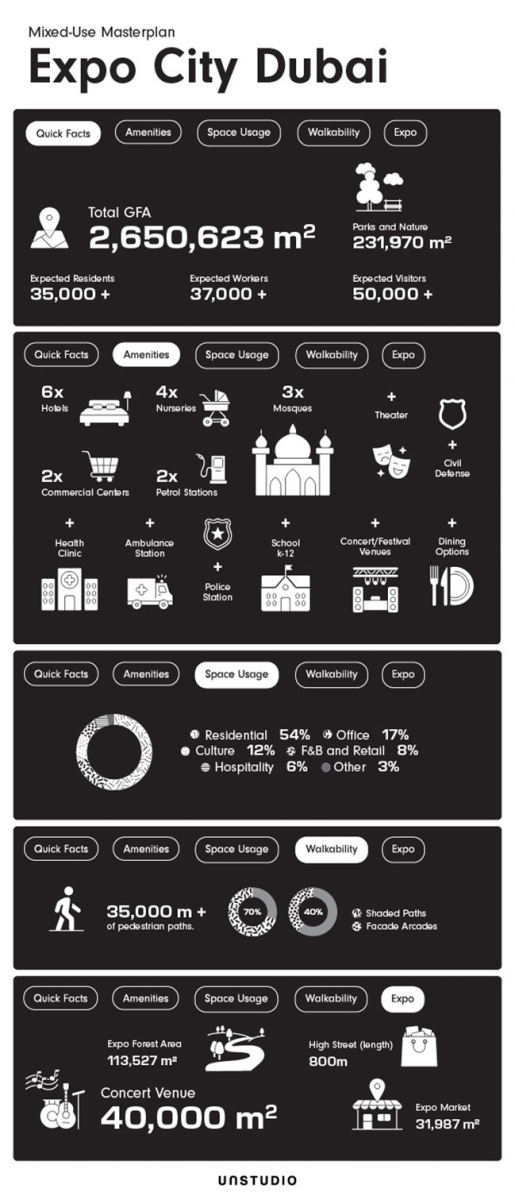
The city will cover a total of 3,5 square kilometers and will undergo a gradual phased development that adapts to evolving requirements. It will be home to more than 35,000 residents and 37,000 professionals. It will continue to attract about 50,000 visitors each year.
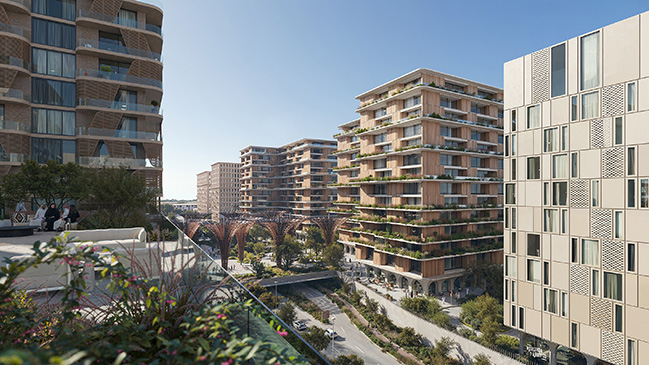
Building on the Expo 2020 legacy, the masterplan is conceived as an economic, social, and cultural development that will introduce a healthy, human-centric environment that can thrive in a competitive real estate market.
Moving away from the organic nature of the current Thematic Districts, the new Expo City Dubai adopts an efficient grid that is a robust urban structure for navigation, circulation and accessibility.
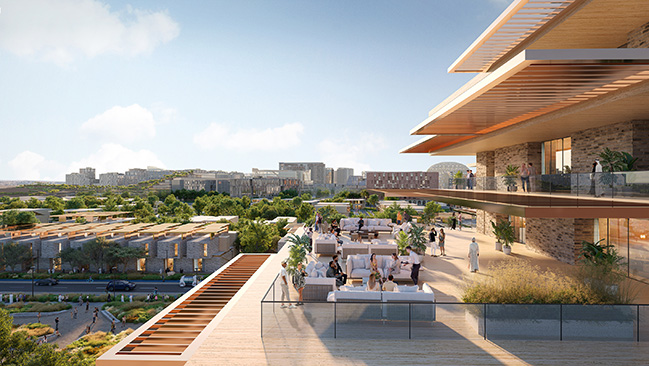
New districts
The masterplan is organised into five new districts, each of which include both existing assets and new builds.
Expo Downtown: a high-density mixed-use area that also houses the tallest building at Expo City.
Expo Fields: serving as a model for healthy living, the district will include sports fields, a school, , homes, retail outlets, F&B venues and an arena for large-scale music events.
Expo Hills: a low-density residential community with a wadi-like open space and landscaped gardens that offers a quieter experience of urban living.
Expo Business: a campus-feel environment for innovative and entrepreneurial businesses that share Expo City’s commitment to sustainability.
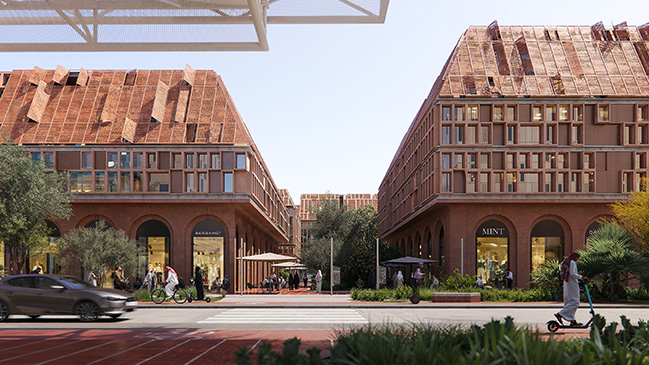
A fifth district, Expo Valley, abuts the masterplan site and comprises a low-density residential neighbourhood that is due to be delivered in 2026.
Each district of the masterplan offers a mix of uses and local amenities in close proximity to all residential units and office spaces. The residential communities themselves will exemplify best practice in innovative, environment-friendly design with a focus on wellbeing and happiness. Permeating the masterplan throughout is a network of green and blue spaces, from parks and fields, to gardens and urban water features.
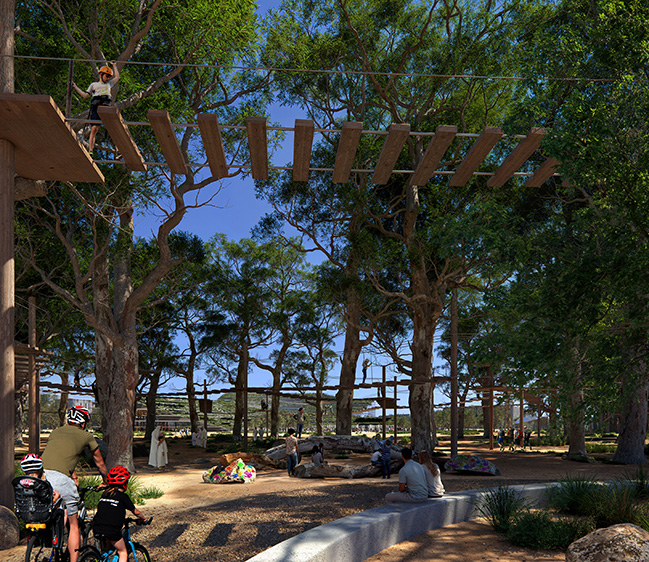
Connecting with the neighbours
The relocation of WTC’s Dubai Exhibition Centre to the site is seen as an opportunity to introduce new users and visitors to Expo City Dubai. This will in turn make the Expo City Dubai site a desirable place for business such as retail, hospitality, office and storage and parking space. Special attention is given to the immediate interface between the DEC and the Expo City Dubai site, to maxmise cross-over from the DEC to the territory, and ensure the space is active, lively and inviting.
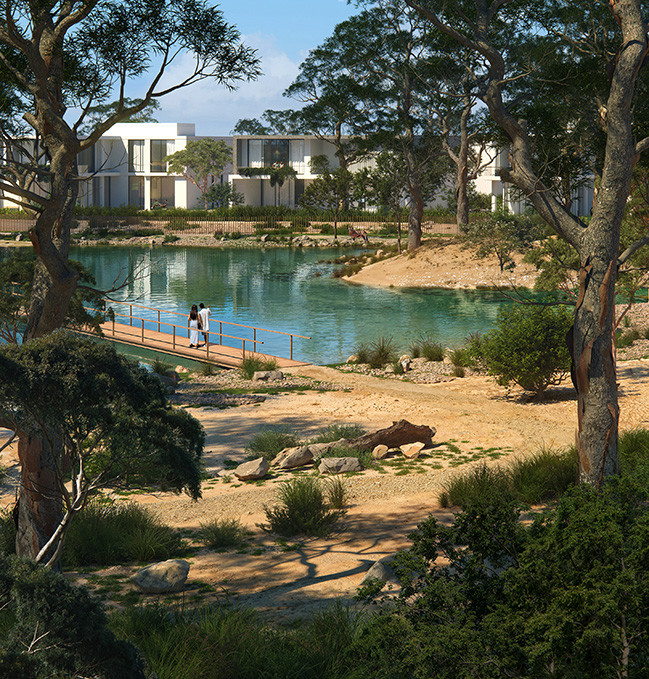
Connecting Expo Valley to Expo City Dubai in the most user-friendly way is of paramount importance. A new open park with leisure and cultural activities, supported by micro-mobility paths link between the two developments. The introduction of a new local Market Hall, Expo Market, helps draw in residents from Expo Valley, on their way to and from their homes.
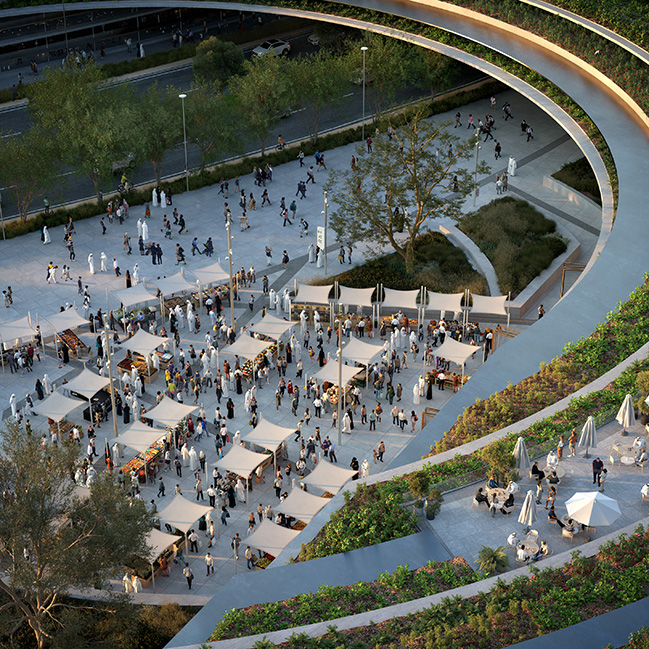
Broader connections
With plans for Al Makhtum Airport to open in 2030, the master plan offers destinations for future passengers in transit, as well as for first-time visitors to Dubai. With unique local hotels, made-in-Dubai shops, farm to table restaurants, as well as a rich cultural programme, the masterplan offers a first-stop welcome to the UAE and to Dubai.
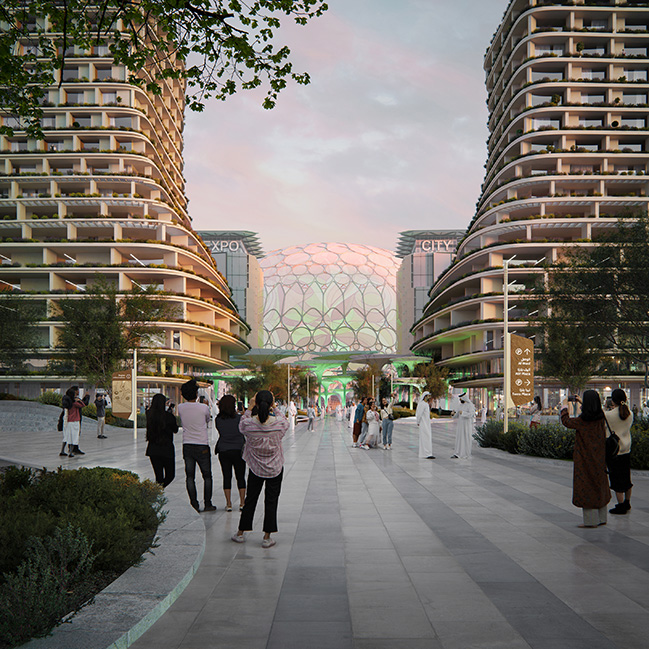
Landscape and Public Realm: A Nature-Based Expo legacy
In the design of Expo City’s landscape, the Danish nature-based design studio SLA has structured the landscape and public realm plan according to the three themes of the Dubai 2020 Expo: Sustainability, Mobility, and Opportunity.
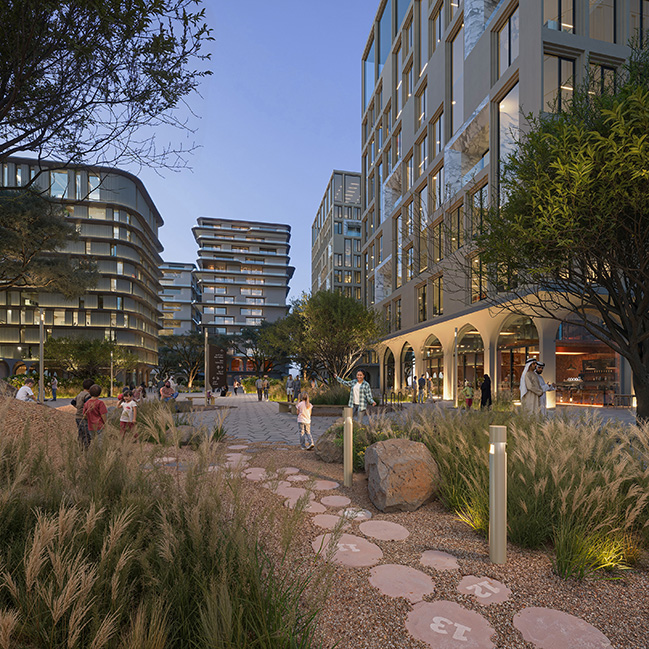
Focusing on these three overarching concepts ensures a nature-based and holistic development of Expo City Dubai with a network of green and blue spaces – from parks and plazas, to small sikkas and urban water features – creating a lush and vibrant everyday public realm.
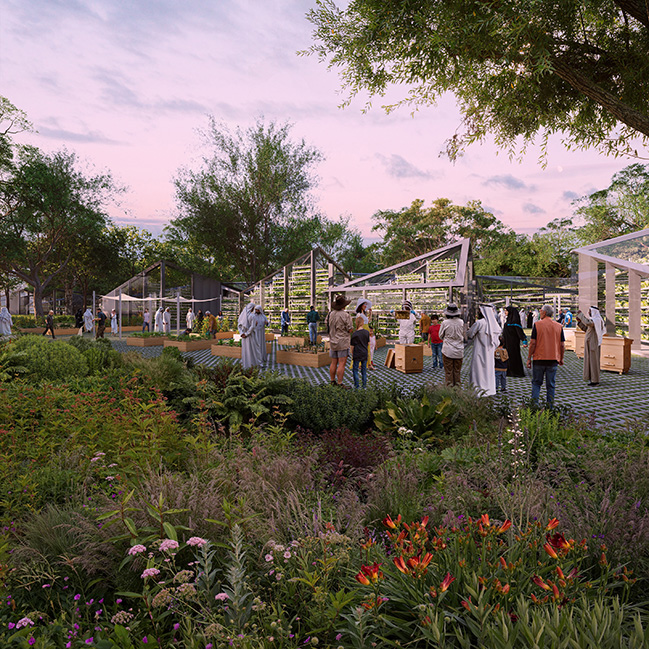
By integrating the Dubai 2020 Expo’s ambitions directly into the fabric of the public realm, the landscape masterplan includes multiple kilometres of active, green and blue networks, vibrant plazas and highstreets, high-performing climate action addressing issues such as urban heat islands, air pollution, and microclimate optimisation, and the planting of more than 30,000 native trees.
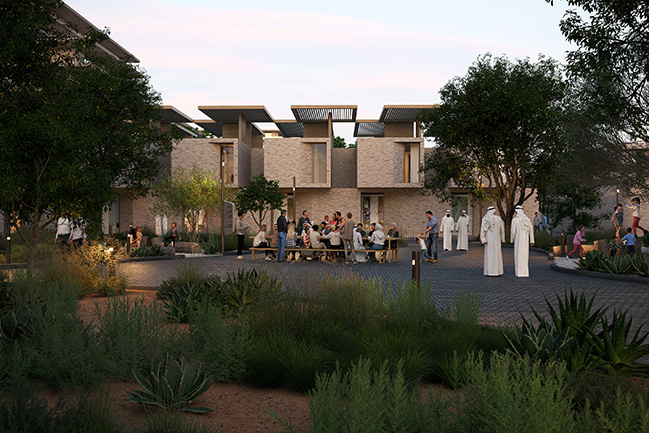
Amongst the many new nature-based features is the design of a new urban ‘Expo Forest’ connecting to the adjacent valley systems with naturally undulating landscapes, ghaf trees, local wildlife, and a host of activities from treetop climbing and birdwatching to Urban Farming to actively support and enhance the local biodiversity.
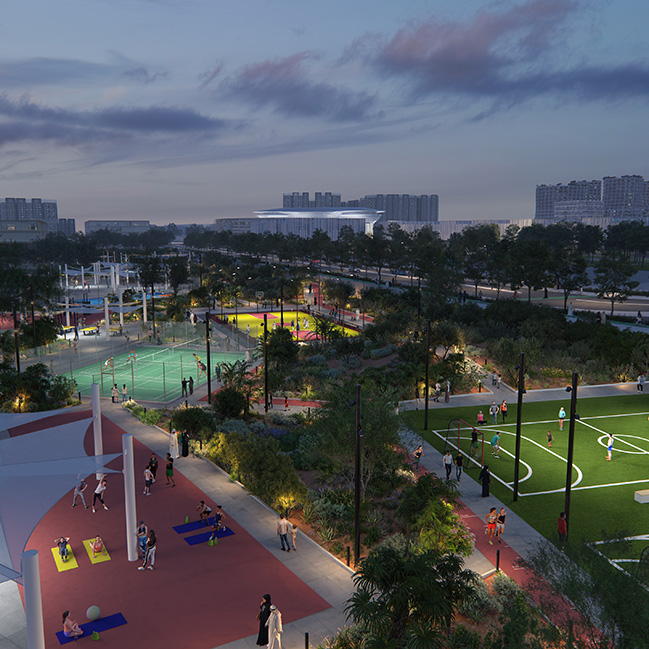
With the stated intent of creating the greenest district in Dubai, the public realm design will immerse residents and visitors in the UAE's unique and resilient nature - thus ensuring the lasting and sustainable legacy of the Dubai 2020 Expo.
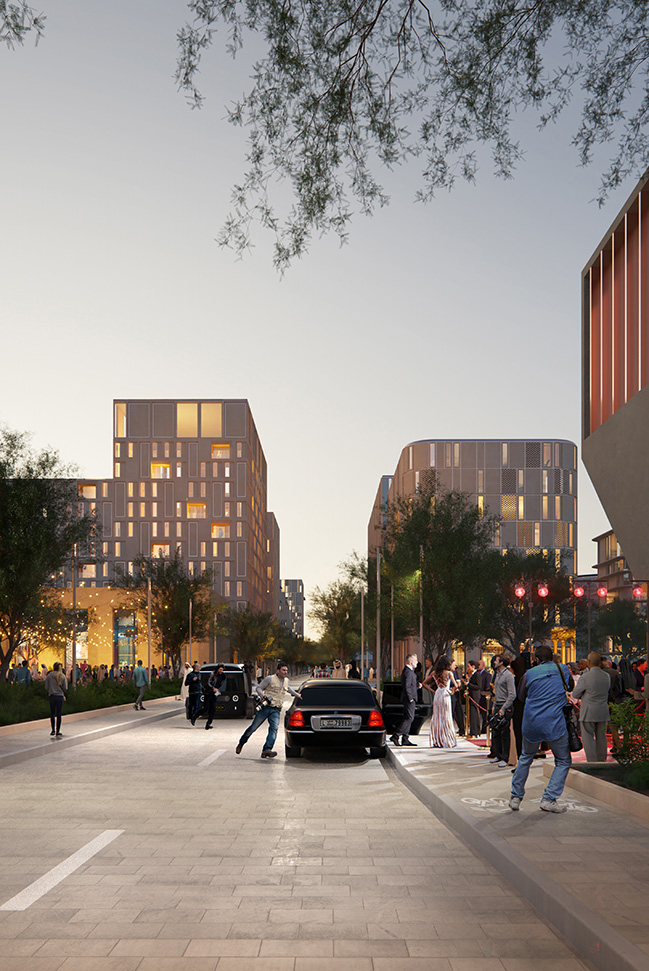
Setting sustainable goals
The new Expo City Dubai will balance human needs with environmental stewardship. The masterplan has been developed and will be implemented in line with specific targets, such as protecting and increasing biodiversity, reducing energy and water consumption, use of clean energy and alternative water sources. In addition, there will be increased use of sustainable public transport options, the inclusion of spaces that encourage walking, cycling and micromobility and residents will enjoy an abundance of green space per person.
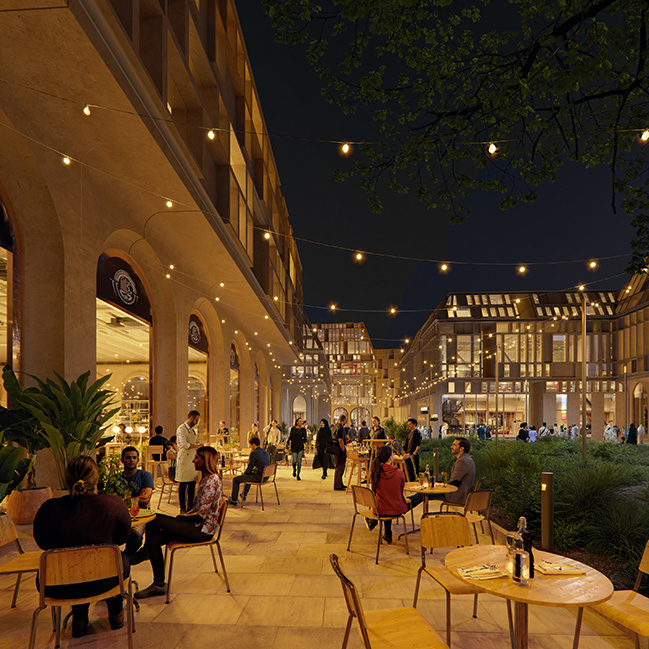
The masterplan sets the target of LEED Gold as a minimum requirement for all buildings, BREEAM Excellent for infrastructure and public realm projects, and already received WELL Community Gold Certification to ensure a focus on health and wellness.
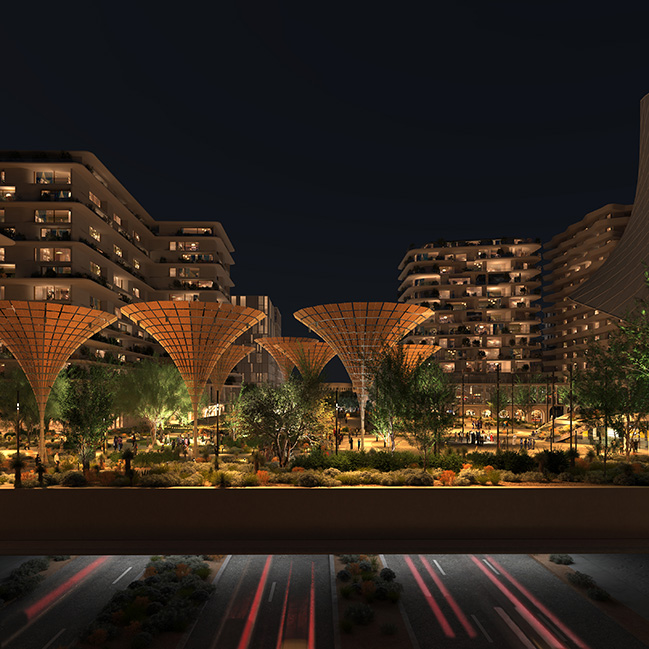
Architect: UNStudio
Client: Expo City Dubai
Location: Dubai, UAE
Year: 2024
Building volume: 2.4 M m2
UNStudio Team: UNStudio: Ben van Berkel, Caroline Bos with Arjan Pit, Dana Behrman, Aurelie Hsiao, Misja Van Veen, Allison Weiler, Michael Labory, Andi Balza, Olga Kotta, Chrysa Triantafyllidou, and Joshua Karategin, Nathan Ngo, Zacharoula Loizou, Yvonne Yuen, Rotem Shenitzer, Jinlai Song, Yimeng Ma, Valentina Amaya, Bart Chompff, Nathan van Nugteren, Lucas Di Gioia, Aleksei Lebedev, Daniel Diez, Juan Manuel Rodriguez, Jose Sanmartin Gonzalez, Carolina Boccella, Mircea Mogan, Hyunjin Park, Andrius Ribikauskas, Luca Fabbri, Alex Kalavech, Caroline Wang, Giovanni Cuguttu, Joe Tu, Luke Kim, Christian Maijstré, Felizitas Dochantschi, Inés Verna, Nawid Piracha, Anna Maria Pisani, Monica Palfy, Shaghayegh Shayan
Visualisations: Plomp, HISM and Hansinok
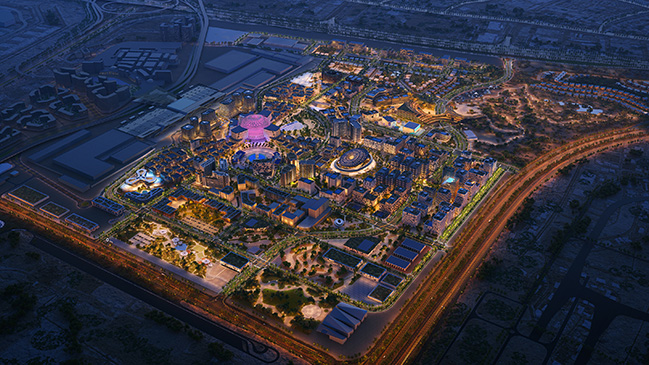
UNStudio transforms Expo City Dubai into the Future Centre of Dubai
02 / 10 / 2025 The Expo City Dubai masterplan is designed as a blueprint for sustainable urban living and is one of five hubs on the Dubai 2040 Urban Master Plan and its roadmap to achieving net zero by 2050...
You might also like:
Recommended post: 1Hotel Paris by Kengo Kuma and Associates
